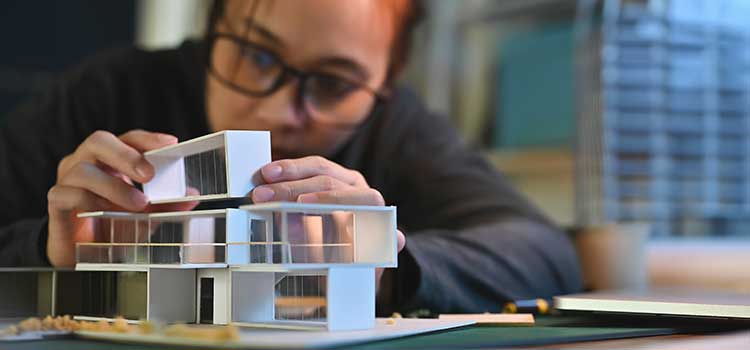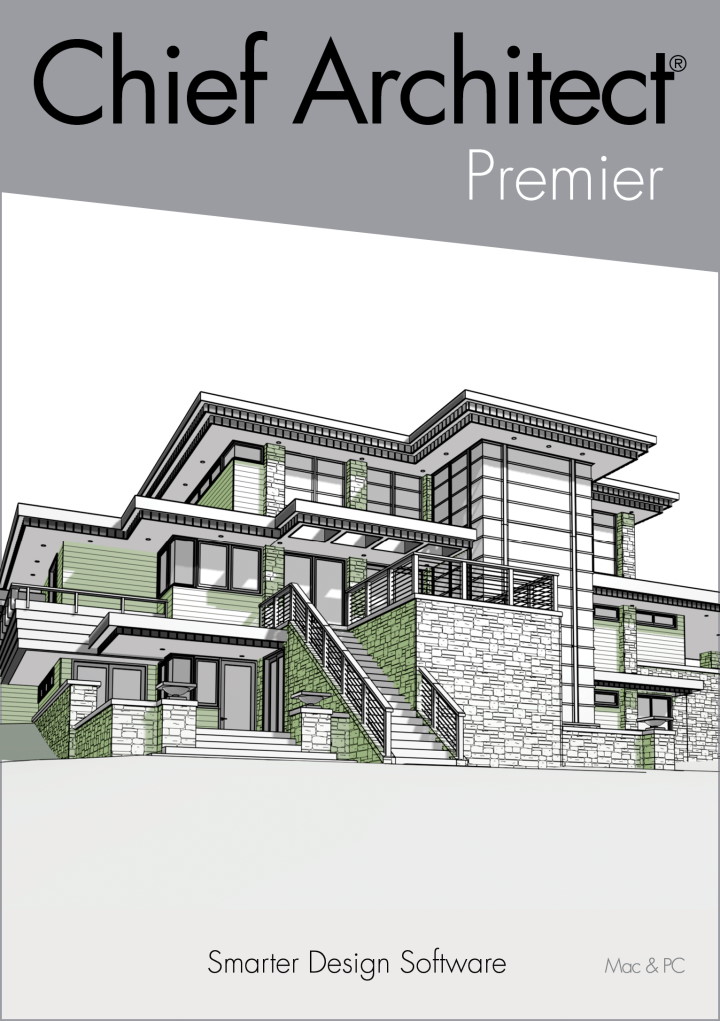Architect Checklist for New Commercial Projects
Architect Checklist for New Commercial Projects
Blog Article
Discover the Necessary Abilities and Qualities Every Architect Must Possess
As a designer, you understand that success in your area goes beyond simply technological abilities. It's concerning mixing creativity with usefulness, promoting collaboration, and taking care of tasks effectively. Each high quality plays a critical duty in your capacity to create areas that influence and work well. But what are the details skills that can genuinely set you apart? Let's discover the crucial features every Architect need to grow to flourish in this ever-evolving career.
Creative Thinking and Technology
Creative thinking and advancement go to the heart of style, driving the design of spaces that motivate and work seamlessly. As an engineer, you'll require to think outside package, pushing boundaries to develop distinct solutions for your customers. You'll frequently discover brand-new materials, strategies, and innovations to enhance your styles. Welcoming technology means remaining in advance of patterns while being adaptable to transform.
You'll likewise draw motivation from various resources-- nature, art, and also everyday life can trigger fresh ideas. This ability to mix creativity with usefulness permits you to attend to intricate problems, guaranteeing your styles fulfill both functional and visual requirements.
Strong Interaction Skills
While making amazing areas calls for creativity, strong interaction skills are equally as crucial for engineers. You require to convey your ideas clearly to clients, service providers, and team participants. Listening is just as vital; recognizing your client's vision assists you develop designs that really fulfill their needs.
You'll usually need to explain complicated principles in a manner that's very easy to understand, whether you exist a proposition or discussing products. Reliable interaction cultivates collaboration, guaranteeing everybody gets on the very same web page throughout the job.
Building connections is vital, as well. When you establish trust fund and relationship, clients are more probable to share their issues and comments, causing much better outcomes.
Finally, don't take too lightly the power of body movement and aesthetic aids. They can boost your message and make your presentations extra appealing. Strong interaction abilities not only boost your designs but likewise reinforce your professional connections in the architectural globe.
Technical Efficiency in Style Software Application
As you browse the ever-evolving globe of style, understanding style software application ends up being essential for converting your imaginative concepts into concrete plans. Acquainting on your own with programs like AutoCAD, Revit, and SketchUp will not only enhance your layout capacities however additionally simplify your workflow. These tools enable you to develop detailed illustrations, 3D models, and also simulations that can aid you imagine and present your principles more properly.
Regularly upgrading your skills and checking out new features can establish you apart from your peers, guaranteeing your designs are precise and innovative. Eventually, technical effectiveness in style software application is a cornerstone of effective design, assisting you bring your visions to life.
Comprehending of Design Principles

Comprehending design concepts additionally enables you to expect possible obstacles early in the style procedure. When you know just how different products behave under various problems, you can make enlightened choices that enhance your layouts. Your designs need to not only be visually pleasing however additionally sensible and lasting.
Additionally, a strong understanding of engineering concepts permits you to introduce within restrictions. You can push imaginative borders while still sticking to security requirements. Inevitably, this understanding enriches your architectural method and establishes you apart in a competitive area.
Task Management Abilities
Reliable project management capacities are vital for engineers, allowing you to look after all facets of a job from perception to conclusion. You'll require to collaborate with various stakeholders, consisting of clients, contractors, and designers, guaranteeing everyone's on the very same page. Establishing clear objectives, timelines, and spending plans is essential; it aids you keep the project on the right track and within scope.
As an architect, you need to additionally be experienced at threat monitoring, recognizing possible concerns before they intensify. Strong communication abilities are crucial, allowing you to express your vision and encourage your team. You'll profit from being arranged and detail-oriented, as this helps simplify procedures and avoid pricey hold-ups.
Additionally, versatility is vital; tasks typically progress, and being adaptable allows you to respond successfully to get more info changes. Ultimately, your job monitoring skills can greatly affect the success of your architectural undertakings, ensuring you supply high quality outcomes on time and within budget plan.
Focus to Information
While handling tasks is essential, your focus to detail can make a considerable difference in the quality of your work. Every line you attract, every product you select, and every small requirements you note contributes to the general success of a job. You require to be thorough, making certain that your designs not only fulfill aesthetic criteria but likewise adhere to building regulations and codes.
Missing also a little detail can cause pricey modifications or safety problems down the line. By cultivating an eager eye for detail, you boost your capability to find prospective troubles before they escalate. This vigilance not just saves you time and resources yet additionally develops your online reputation as a trusted Architect. Bear in mind, it's often the tiniest information that boost a project from excellent to outstanding. Embrace this ability, and allow it guide your style procedure, ensuring that your vision is carried out perfectly.
Versatility and Problem-Solving Abilities
As an engineer, you'll frequently encounter unforeseen modifications in design and task needs. Your capacity to embrace these shifts and discover cutting-edge options is important for success. Staying adaptable in your method not just enhances your analytic abilities but likewise keeps your tasks on the right track.
Welcoming Modification in Style
Welcoming change in design is vital for architects, especially when steering progressing customer needs and emerging technologies. You need to cultivate versatility, as jobs frequently move instructions based on brand-new understandings or restrictions. Being open to transform allows you to discover ingenious approaches and create solutions that reverberate with your clients.
When confronted with obstacles, your problem-solving abilities enter play. You'll typically require to reassess ideas and readjust plans on the fly, making certain that the last outcome aligns with the customer's vision while satisfying safety and governing requirements. By being resourceful and flexible, you not only improve your styles but additionally construct trust fund with your clients, showing that you can browse the complexities of modern-day architecture effectively.
Ingenious Solutions to Obstacles

Versatility in Job Administration
While navigating the complexities of project management, flexibility becomes a necessary property for architects. You'll typically encounter unexpected difficulties, from layout changes to spending plan restraints, requiring fast reasoning and flexibility. Welcoming change permits you to pivot your strategies and find innovative solutions, ensuring job success.
Solid analytic skills are vital; they allow you to examine scenarios, consider alternatives, and apply efficient solutions on the fly. When working with varied groups, being open to comments and alternate concepts fosters cooperation and stimulates creativity.
Regularly Asked Questions
What Educational History Is Called For to Come To Be a Designer?
To end up being an architect, you'll need at the very least a professional degree in architecture, typically a Bachelor's or Master's. Finishing an internship and obtaining licensure through exams is essential for your occupation development.
Just How Important Is Networking in the Design Field?
Networking's vital in architecture. It assists you build partnerships, find task possibilities, and gain insights from knowledgeable specialists. By getting in touch with others, you improve your career leads and stay updated on market fads and developments.
What Are the Typical Occupation Paths for Architects?
Usual profession paths for architects include style more info roles in companies, project administration, metropolitan preparation, and specialized areas like lasting design. Architect. You could additionally explore mentor or consulting, depending on your interests and experiences
How Can Architects Keep Updated With Market Patterns?
To remain updated with market fads, you must routinely go to seminars, sign up with expert organizations, register for pertinent magazines, and involve with on-line discussion forums. Connecting with peers also assists you acquire insights into emerging growths in style.
What Function Does Sustainability Play in Modern Design?
Sustainability shapes modern architecture by stressing energy efficiency, source preservation, and green products. You'll develop areas that minimize environmental influence, boost passenger wellness, and reply to climate difficulties, making your designs more relevant and impactful.
While designing amazing rooms needs imagination, solid interaction skills are just as important for designers. Strong interaction skills not only boost your layouts however also reinforce your specialist connections in the building world.
Effectiveness in layout software application lays the groundwork for a much deeper understanding of design principles, which is important for engineers.As a designer, you'll typically face unforeseen changes in layout and task needs.Accepting adjustment in layout is necessary for architects, specifically when steering developing customer needs and emerging technologies.
Report this page